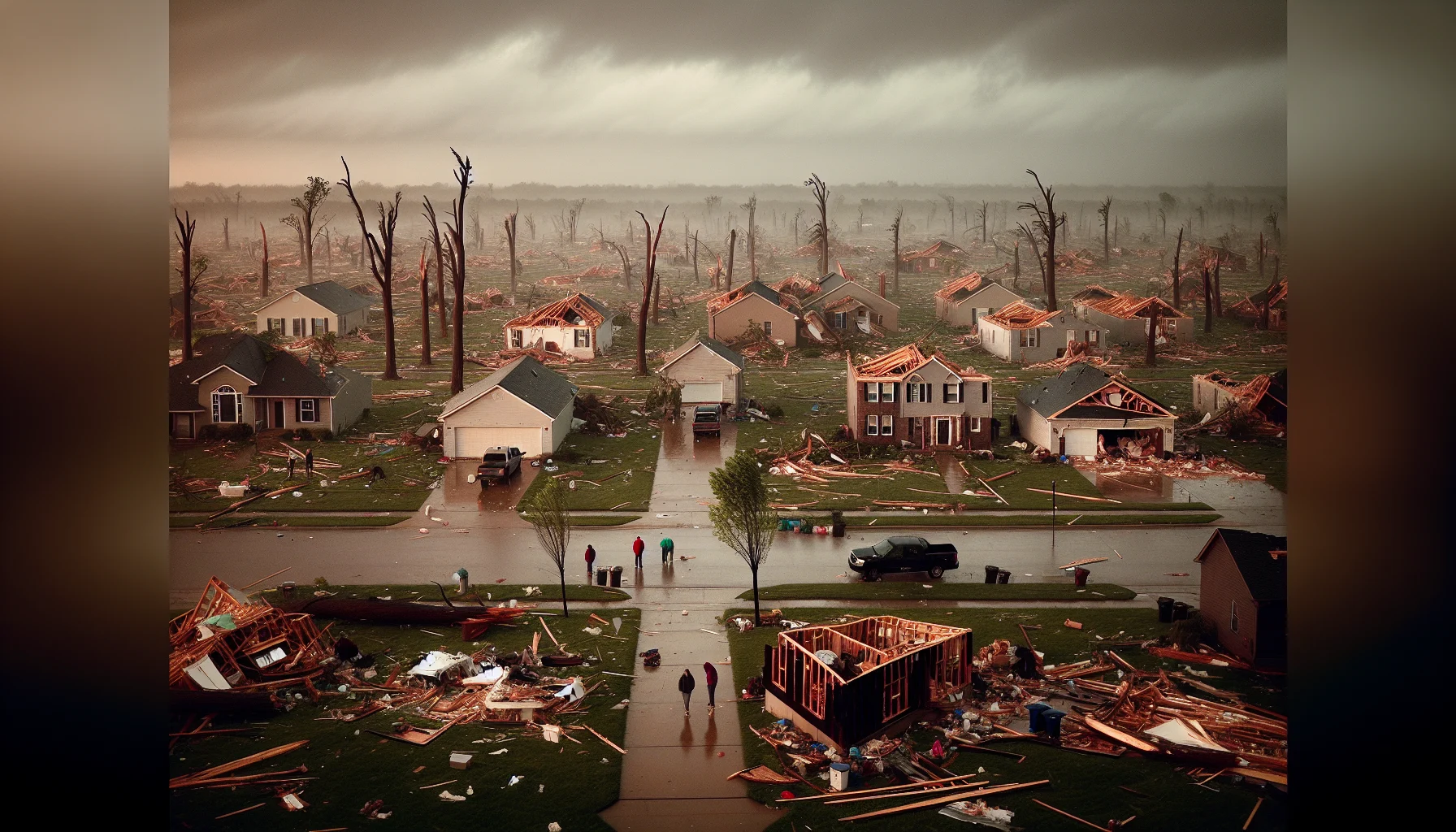
The 2011 Joplin Tornado
by: The Calamity Calendar Team
May 22, 2011
A Clear Sky's Deception
May 22, 2011, began like many spring days in Joplin, Missouri, sunny and warm. The chatter of weather warnings circulated as a murmur of possibilities, a common refrain during the volatile seasons, when low-pressure systems spin into harbingers of chaos. Yet, beneath the typicality, there was an unseen tension in the air, a charged prelude to something fierce and unimaginable.
Brewing Turmoil in the Skies
The warning signs were evident to meteorologists; a powerful cyclone had unfurled over the southwestern United States, drawing ominous breath across the vast central plains. This mass of swirling energy created the perfect storm, a sinister ballet of atmospheric conditions that set the stage for one of the most devastating tornadoes recorded. Despite the forecasts, predicting a storm’s precise temper was as elusive as the storm itself — until it hits.
Joplin was a city known for its steadfast spirit, a community shaped by hard winters and industrious summers. Tornadoes were a realistic, if begrudged, part of life. However, the scale of the storm about to plow through their lives was beyond what they might have imagined. It was the kind of thing one heard about distantly, that happened elsewhere.
Impact Strikes
A blanket of silence fell over Joplin at 5:17 PM CDT as the National Weather Service broadcasted a tornado warning. Residents who heeded the alert took whatever shelter they could, securing their worlds against the threat hovering just beyond their doorsteps. As minutes ticked by, the perceived calm became unsettling — like the world holding its breath.
At 5:34 PM CDT, the tornado made its first angry contact with the earth, just east of the Kansas border. It was a column of fury, growing and twisting, a force of nature that hungrily expanded as it crossed the land. By 5:41 PM CDT, the tornado was a full-fledged monster — an EF5, with winds exceeding 200 mph, scouring Joplin with its indiscriminate destruction.
As it tore into the city, it became more than a storm. It was a ravager of dreams, ripping through neighborhoods and leveling the familiar into flattened, incomprehensible ruin. St. John’s Regional Medical Center became a skeleton of its former self, battered into a shell inhabited by bedraggled, stunned survivors. Schools, places of solace and learning, were reduced to rubble, marking the end of innocence on this dark day.
Thanks for subscribing!
A City Grieving
By the time 6:00 PM rolled around, the tornado had passed, leaving behind a sobering tableau of devastation. The skies calmed, revealing the starkness of a city dressed in dust and debris. It was then a jigsaw of tragedy — 158 lives had been claimed, etched into memory as precious and poignant absences that resonated sharply. More than a thousand were injured, bearing scars and stories of survival.
The physical toll was staggering, with over 8,000 structures damaged or destroyed, leaving families and businesses dislodged, sifting through what little was salvageable. Rough estimates placed property damage near $2.8 billion, a figure that paled in comparison to the emotional cost shouldered by Joplin's inhabitants.
Electricity and communication shattered in the storm's wake, leaving heroes and victims alike grappling in the dim uncertainty of immediate aftermath. Fleeting memories became guideposts as the community sought out their neighbors, the instinct of solidarity rising from despair.
Rising from the Ashes
The response was swift and mighty. Organizations like FEMA descended with resources and manpower, navigating through the confusion with a blend of efficiency and empathy. Volunteers from across the nation followed, lending their hands, tools, and hearts to the effort of recovery. Stories of selflessness and endurance began to dot the grim landscape, testifying to an unyielding human spirit.
In the following weeks and months, Joplin became an emblem of resilience — not just physically, but emotionally. Policy makers and city planners took the tragedy personally, initiating reforms to better arm the nation against future threats. Emergency systems were scrutinized, honed, and improved, seeking to prevent repetition of the missteps that had left Joplin so vulnerable. Building codes evolved too, strengthening structures to weather the fury of nature with greater resolve.
A Lesson Hard Learned
Over a decade later, Joplin stands as a canvas of renewal and remembrance. It remains a community marked by loss but also by the will to rise, shift, and grow stronger. The lessons learned in those fraught moments have informed national strategies on how best to convey danger — with clarity, urgency, and compassion.
Research continues to peel back the layers of these potent storms, seeking to understand their mechanics and better predict their emergence. Joplin's tragedy spurred on this knowledge, a contribution unbidden but now invaluable.
The memory of May 22, 2011, is etched into the fibers of the city, a testament to both the capriciousness of nature and the unwavering spirit of the human heart. The shadow cast by the tornado serves as a reminder of the power of community and the enduring quest to honor those lost through action and progress.
Stay in the Loop!
Become a Calamity Insider and get exclusive Calamity Calendar updates delivered straight to your inbox.
Thanks! You're now subscribed.